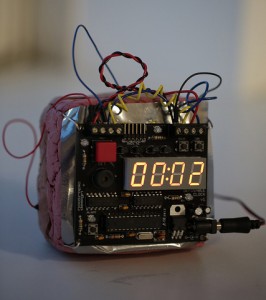Bomb Threat Closes Utah High School; Equals Making a False Alarm Charges
On what was supposed to be the first day of school for Westlake High School students on Tuesday, August 19, classes were cancelled as the result of a bomb threat with promises of other violence. If caught, the perpetrator could face “making a false alarm” charges or potentially worse, conspiracy to commit mass destruction.
Potentially a Student Who Really Didn’t Want to Start School
On Tuesday morning just before 3 a.m., Saratoga Springs Police received a call from the perpetrator via Skype claiming that he had planted 10 explosives in the high school and left an offshore bank account number under a chair in the school auditorium where $10 million was to be deposited. If he didn’t receive the money, he claimed he would carry out the bomb threat. He also threatened to show up at the school with more explosives and guns and “open fire” if he thought anyone was trying to deactivate the bombs.
According to a report from KSL News, Saratoga Springs Police Chief Andrew Burton stated that the caller knew enough about the layout of the school to be a concern and to take the threat seriously. This fact, combined with two other strange incidents in the previous week–an individual on the roof with no good cause, and a janitor later finding ceiling tiles removed from parts of the school–was enough for police to lock down the building. As many students and parents were notified as possible, but those who didn’t hear and showed up to school were turned away.
Police searched the building with bomb-sniffing dogs but did not locate any explosives. School started officially for Westlake High School on Wednesday. Police are still investigating who is responsible for this instance of making a false alarm.
Penalty for Making a False Alarm
According to the Utah Criminal Code 76-9-105, “a person is guilty of making a false alarm if he initiates or circulates a report or warning of any fire, impending bombing, or other crime or catastrophe, knowing that the report or warning is false or baseless and is likely to cause evacuation of any building, place of assembly, or facility of public transport, to cause public inconvenience or alarm or action of any sort by any official or volunteer agency organized to death with emergencies.”
In other words, calling in a fake bomb threat is the criminal equivalent of making a false alarm. At the least, it is considered a class B misdemeanor. However, in more serious charges, such as the case of the two students in Roy, Utah, at the beginning of 2012, it can also be considered a second degree felony if one is “making a false alarm relating to a weapon of mass destruction.”
While it hasn’t been determined if the perpetrator of the incident at Westlake High School was actually a student, it probably wouldn’t be very surprising. Many adults can think back to times (usually just before a big test, right?) when they considered at least pulling the fire alarm. However, what most juveniles don’t realize is the seriousness of the offense.
If your child has been charged with making a false alarm, it’s important that you consult with an experienced and sympathetic juvenile defense attorney who will remember their own days of being young and look out for the best interests of those who are still in this stage.

